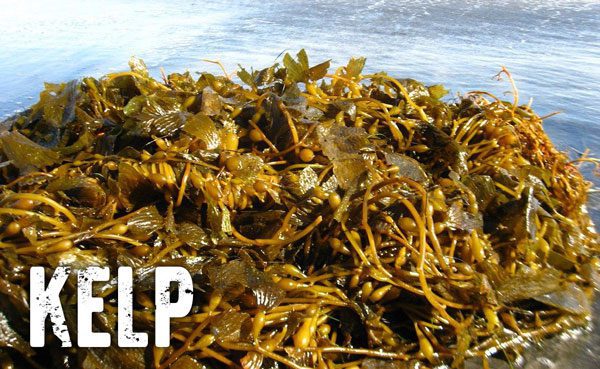Once we begin to get the hang of growing food in our home gardens, the next step is to incorporate various techniques to help them flourish and become even more productive. Success is dependant on getting the plants off to a strong start, and sea kelp can help with that.
What Is Kelp?

Kelp is a photosynthetic plant-like species classified as seaweed algae (a protist), partially because it doesn’t absorb nutrients or water through its roots. Kelp doesn’t have roots!
Instead, it acts as a filter as it absorbs the elemental minerals it needs for growth from the surrounding waters. Kelp is usually found growing in areas where the waters are pristine or less polluted.
The most common kelp used in crop production is the species Ascophyllum nodosum, which is found and harvested from the crisp, cool waters of the North Atlantic Ocean.
Rapid Repair
Sea kelp typically grows in the “mid-intertidal zone,” where the shifting tides drastically alter the depth of the water each day. When the tides are low, the kelp falls into a heap on the ocean floor. When they are high, the kelp rises with the help of small air bladders connected to the base of their fronds (leaves). This constant up and down motion requires kelp to repair itself quickly.
Kelp produces large amounts of amino acids, vitamins, and, perhaps most importantly, natural plant growth hormones such as auxins, cytokines, and gibberellins. These substances can benefit our plants when applied to seeds and seedlings alike.
How To Use Kelp
Many growers soak seeds in a solution of kelp and water for about 24 hours before planting. The results are seeds that germinate and sprout at a faster rate and a lower risk of germination failure. The soak is effective because of the presence of plant growth hormones called gibberellins.
Why Kelp Is Effective

Gibberellins help activate enzymes that stimulate the breakdown of the seed coat and the proteins stored inside. In the right conditions, seeds will slowly create gibberellins, but physically introducing them early via kelp speeds up the process. This technique can be most helpful when used on seeds that are notoriously hard to sprout.
Seedlings and cuttings can also benefit from kelp applications. Kelp contains another crucial group of plant growth hormones called auxins. Auxins help initiate and increase root development and growth.
Soaking Cuttings And Seedlings

Soaking the severed end of a cutting in a kelp and water solution can help stimulate the development of roots thanks in part to the naturally occurring auxin Indole-3-Acetic Acid (IAA). Synthetic versions of this auxin are used as the active ingredient in most commercial cloning and rooting gels.
Similarly, supplying young seedlings with kelp during regular watering can also help to encourage rapid growth and establishment of the root system, giving the plants a jump start on a healthy and productive life.
Trusted Technique
This approach is highly effective at the time of transplanting seedlings and older plants. Soaking the roots in a kelp and water solution before transplanting can significantly reduce the effects of transplant stress and will allow the plant to acclimate faster.
Most liquid sea kelp products available include directions and usage rates for treating seeds as well as seedlings. There is also a wealth of information online through reliable resources such as Garden Culture Magazine.
Where can I get or buy kelp seeds?